-
 On the 1st of September, Nazi Germany invades Poland. This forces Poland's allies, France and Britain to declare war on Germany.
On the 1st of September, Nazi Germany invades Poland. This forces Poland's allies, France and Britain to declare war on Germany. -
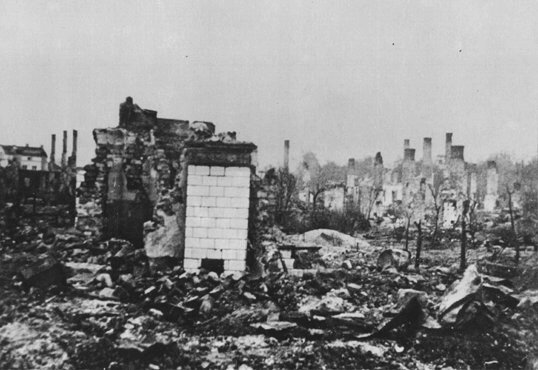 German Troops had bombarded Holland, Belgium and France. By the mid of June, France had signed an armistice, leaving Britain as the only country fighting Germany.
German Troops had bombarded Holland, Belgium and France. By the mid of June, France had signed an armistice, leaving Britain as the only country fighting Germany. -
 The Evacuation of Dunkirk involved the rescue of more than 338,000 British and French soldiers from the French port of Dunkirk. This is considered a big boost for the British Morale
The Evacuation of Dunkirk involved the rescue of more than 338,000 British and French soldiers from the French port of Dunkirk. This is considered a big boost for the British Morale -
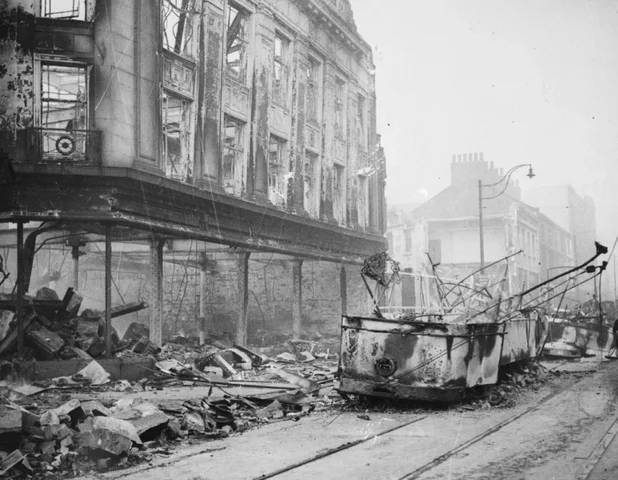 The Luftwaffe (German Air Force) conducted a prolonged campaign of aerial bombing strikes on British towns and cities from September 1940 to May 1941, known as the "Blitz" (from the German term Blitzkrieg, or "flash war").
The Luftwaffe (German Air Force) conducted a prolonged campaign of aerial bombing strikes on British towns and cities from September 1940 to May 1941, known as the "Blitz" (from the German term Blitzkrieg, or "flash war"). -
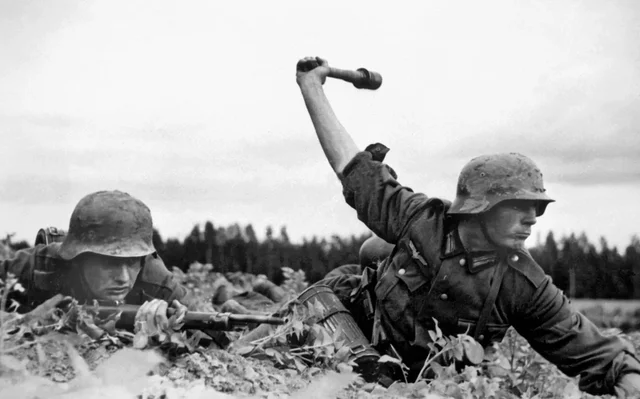 Operation Barbarossa was a code name for the invasion of the Soviet union by Germany. This operation had failed and hence the major turning point that led to the downfall of Germany.
Operation Barbarossa was a code name for the invasion of the Soviet union by Germany. This operation had failed and hence the major turning point that led to the downfall of Germany. -
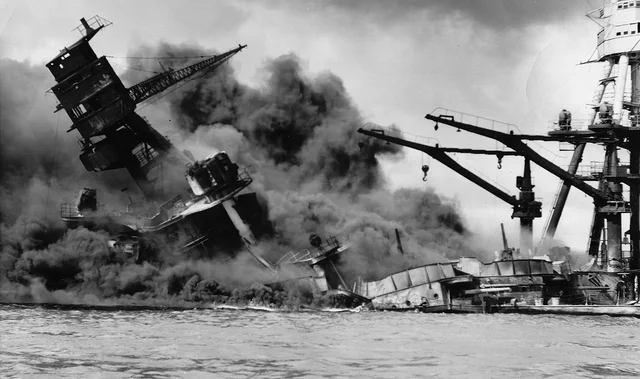 The Japanese military launched a surprise attack on the United States Naval Base at Pearl Harbor, in Hawaii. The US had been supplying Britain against the Nazis, causing pressure to Japan, halting its military expansion in Asia and the Pacific.
The Japanese military launched a surprise attack on the United States Naval Base at Pearl Harbor, in Hawaii. The US had been supplying Britain against the Nazis, causing pressure to Japan, halting its military expansion in Asia and the Pacific. -
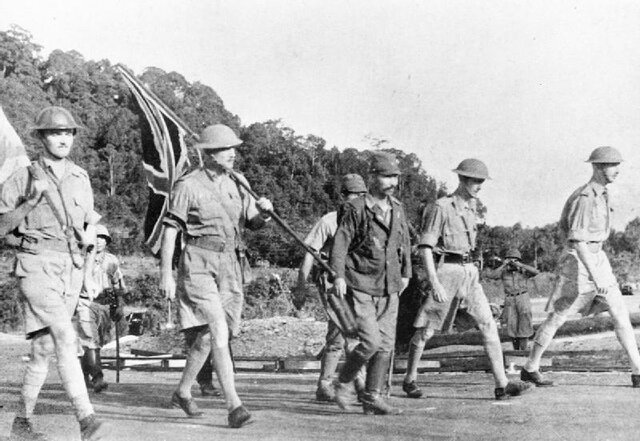 The Pacific War's South-East Asian theatre saw the Battle of Singapore, sometimes referred to as The Fall of Singapore. Singapore, a British stronghold, was taken by the Empire of Japan after battle that lasted from February 8 to February 15, 1942.
The Pacific War's South-East Asian theatre saw the Battle of Singapore, sometimes referred to as The Fall of Singapore. Singapore, a British stronghold, was taken by the Empire of Japan after battle that lasted from February 8 to February 15, 1942. -
 Six months after Japan's attack on Pearl Harbor and one month after the Combat of the Coral, a significant naval battle known as the Battle of Midway took place in the Pacific Theater of World War II from June 4 to June 7, 1942.
Six months after Japan's attack on Pearl Harbor and one month after the Combat of the Coral, a significant naval battle known as the Battle of Midway took place in the Pacific Theater of World War II from June 4 to June 7, 1942. -
 General Erwin Rommel successfully overruns the British-Allied garrison in Tobruk, Libya, on June 21, 1942, and his panzer division takes control of the North African port. Britain took over Tobruk after defeating the Italians in 1940.
General Erwin Rommel successfully overruns the British-Allied garrison in Tobruk, Libya, on June 21, 1942, and his panzer division takes control of the North African port. Britain took over Tobruk after defeating the Italians in 1940. -
 Germany had claimed that the murder of Jews was a mere war rumor. However, after looking into Riegner's report over the following three months, State Department officials verified the news of the Nazi regime's plan and, according to Wise, gave him permission to inform the American public.
Germany had claimed that the murder of Jews was a mere war rumor. However, after looking into Riegner's report over the following three months, State Department officials verified the news of the Nazi regime's plan and, according to Wise, gave him permission to inform the American public. -
 German forces, totalling only approximately 91,000 soldiers left alive after months of ferocious combat and significant deaths, submit at Stalingrad on the Volga. In the middle of November 1942, Soviet forces launched a counteroffensive against the German soldiers positioned at Stalingrad.
German forces, totalling only approximately 91,000 soldiers left alive after months of ferocious combat and significant deaths, submit at Stalingrad on the Volga. In the middle of November 1942, Soviet forces launched a counteroffensive against the German soldiers positioned at Stalingrad. -
 During World War II's Operation Overlord, the Allied invasion of Normandy included landing operations and related airborne operations on Tuesday, June 6, 1944. It was the greatest seaborne invasion in history, known under the codename Operation Neptune and frequently referred to as D-Day.
During World War II's Operation Overlord, the Allied invasion of Normandy included landing operations and related airborne operations on Tuesday, June 6, 1944. It was the greatest seaborne invasion in history, known under the codename Operation Neptune and frequently referred to as D-Day. -
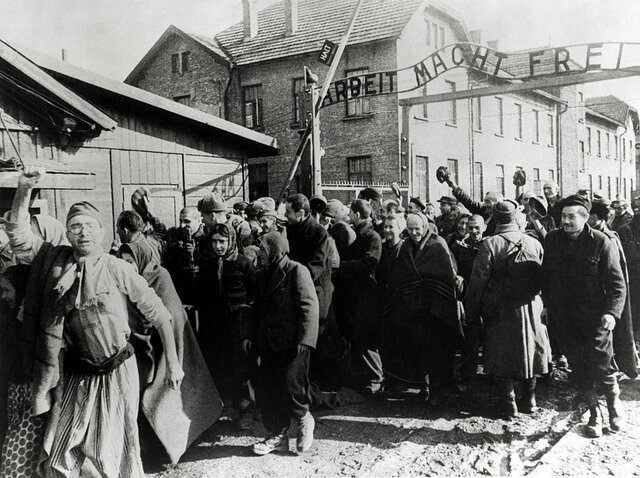 The liberation of the survivors from the network of concentration camps by Soviet forces in Auschwitz, Poland, allows the world to fully understand the extent of the atrocities committed there.
The liberation of the survivors from the network of concentration camps by Soviet forces in Auschwitz, Poland, allows the world to fully understand the extent of the atrocities committed there. -
 To bring the war with Japan to a speedy end and spare American lives, two bombs were dropped. The first atomic bomb, named Little Boy, was dropped on Hiroshima from the Enola Gay, a B-29 bomber, at 8:15 AM on August 6, 1945. The second bomb, named Fat Man, was dropped on Nagasaki from the Bockscar, also a B-29 bomber, at 11:02 AM on August 9, 1945
To bring the war with Japan to a speedy end and spare American lives, two bombs were dropped. The first atomic bomb, named Little Boy, was dropped on Hiroshima from the Enola Gay, a B-29 bomber, at 8:15 AM on August 6, 1945. The second bomb, named Fat Man, was dropped on Nagasaki from the Bockscar, also a B-29 bomber, at 11:02 AM on August 9, 1945